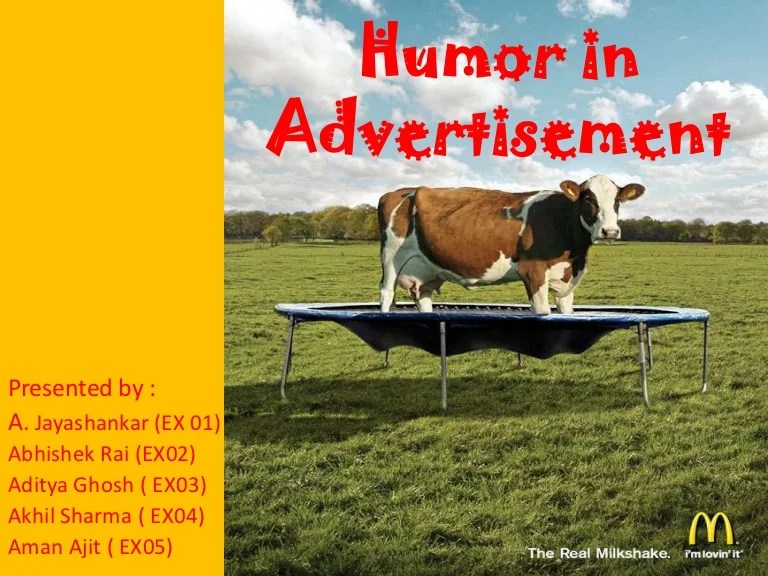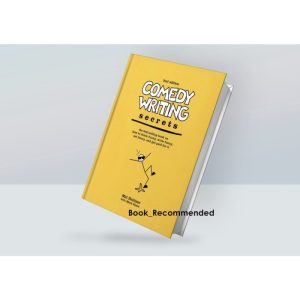
Ever wondered why some ads stick with you, while others vanish like a fart in the wind? The secret ingredient is often humor! From witty puns to slapstick silliness, humor in advertising is a powerful tool that can capture attention, boost brand recall, and even drive sales. But crafting a truly effective humorous campaign requires more than just a few chuckles; it’s about understanding your audience, navigating cultural nuances, and measuring the impact of your comedic efforts.
Get ready to explore the fascinating world of funny ads!
This exploration delves into the various types of humor used in advertising, examining their effectiveness across different demographics and brand identities. We’ll analyze successful and unsuccessful campaigns, highlighting the critical role of cultural sensitivity and storytelling. We’ll also uncover the methods used to measure the success of humorous ads, addressing the inherent challenges in quantifying the impact of laughter.
Prepare for a journey filled with insightful examples, hypothetical campaigns, and a healthy dose of amusement!
Types of Humor in Advertising

Humor in advertising is a powerful tool, capable of capturing attention, enhancing memorability, and fostering a positive brand association. However, the effectiveness of humor hinges on its skillful application, aligning with the target audience and brand personality. Choosing the wrong type of humor can backfire spectacularly, leading to offense or irrelevance. This section explores various types of humor used in advertising and examines their impact.
Slapstick Humor in Advertising
Slapstick humor relies on physical comedy and exaggerated situations to elicit laughter. Think pratfalls, silly mishaps, and generally clumsy characters. It’s often visually driven and easily understood across cultures. However, it can sometimes be perceived as childish or unrefined, limiting its effectiveness for sophisticated brands or older demographics. A classic example is a commercial featuring a character tripping over a product, showcasing its durability in a comical way.
The effectiveness depends on the execution – a well-crafted slapstick scene can be highly memorable and endearing, while a poorly executed one can appear amateurish.
Irony and Sarcasm in Advertising
Irony and sarcasm create humor through unexpected juxtapositions or statements that contradict expectations. They require a degree of sophistication from the audience, who must understand the implied meaning. A successful example might be a luxury car commercial showing the car stuck in a traffic jam, ironically highlighting its superior comfort even in frustrating situations. This type of humor can be effective for brands targeting a younger, more discerning audience, who appreciate wit and cleverness.
However, it can easily backfire if the irony is too subtle or the sarcasm too harsh, alienating the target audience.
Satire in Advertising
Satire uses humor to critique societal norms, trends, or even competitors. It requires a sharp wit and a good understanding of the cultural context. A successful satirical ad might subtly mock the pretentiousness of a competitor’s product or highlight the absurdity of consumerism. Satire can be highly effective in building a brand image as witty and insightful, appealing to a sophisticated audience who appreciate intelligent humor.
However, it also carries significant risk. If the satire is poorly executed or misinterprets the target audience’s sensibilities, it can be perceived as offensive or irrelevant.
Puns in Advertising
Puns, or wordplay, use the multiple meanings of words to create humor. They are often clever and memorable, but require a certain level of linguistic understanding. A successful pun might use a word that relates both to the product and a humorous context. For example, a shoe company might use the pun “sole mate” to connect their shoes to the idea of finding a romantic partner.
The effectiveness of puns depends on their cleverness and relevance to the brand and product. Overused or poorly executed puns can feel forced and detract from the message.
Examples of Humor Styles in Advertising
| Humor Style | Example Ad | Target Audience | Effectiveness |
|---|---|---|---|
| Slapstick | A person slipping on a banana peel while carrying a new, unbreakable phone. | Broad, younger audience | High memorability, but can be perceived as childish. |
| Irony | A luxury car commercial showing the car stuck in a traffic jam, highlighting its comfortable interior. | Affluent, sophisticated audience | Can be very effective, but requires a discerning audience. |
| Satire | A commercial mocking overly serious competitors in the same industry. | Informed, socially aware audience | High impact if done well, but risks alienating audiences. |
| Puns | A coffee shop ad with the tagline “Have a brew-tiful day!” | Broad audience, but effectiveness depends on pun quality. | Memorable if clever, but can fall flat if forced. |
Hypothetical Advertising Campaigns
This section details three hypothetical advertising campaigns utilizing different humor styles, outlining their target audiences and desired outcomes.
Campaign 1: Slapstick – “Unbreakable Phone”
Target Audience: Young adults (18-25), tech-savvy, active lifestyle.
Desired Outcome: Increased brand awareness and sales of a new, durable smartphone. The campaign would feature a series of short, funny videos showcasing the phone’s resilience through slapstick scenarios (e.g., being dropped from a great height, run over by a car, etc.), highlighting its durability without taking itself too seriously. The humor is designed to be lighthearted and relatable, emphasizing the phone’s ability to withstand the rigors of daily life.
Campaign 2: Irony – “Luxury Coffee”
Target Audience: Affluent professionals (30-45), appreciate high-quality products and subtle humor.
Desired Outcome: Position the brand as a premium, sophisticated choice. The campaign would use ironic visuals and witty copy, contrasting the luxurious setting of a high-end coffee shop with the mundane realities of everyday life (e.g., a perfectly crafted latte being spilled in a stressful meeting). The irony would underscore the idea that even in chaotic situations, a moment of luxury can make a difference.
Campaign 3: Puns – “Eco-Friendly Cleaning Products”
Target Audience: Environmentally conscious consumers (25-50), appreciate clever wordplay and value sustainability.
Desired Outcome: Drive sales and promote the brand’s commitment to eco-friendly practices. The campaign would utilize puns related to both cleaning and environmentalism (e.g., “We’re scrubbing up the planet,” or “Shine bright, be green”). The puns are intended to be memorable and engaging, associating the brand with both effectiveness and environmental responsibility.
Humor and Brand Building

Humor, when used effectively in advertising, can be a powerful tool for building a strong and memorable brand. It cuts through the noise of competing messages, fostering a connection with consumers on a more emotional and personal level than traditional advertising approaches. A well-placed joke or witty observation can transform a simple product advertisement into a shared experience, strengthening brand loyalty and driving positive word-of-mouth marketing.By creating positive associations with a brand through humor, companies can significantly improve brand recall and recognition.
A funny commercial is more likely to stick in a viewer’s memory than a dry, factual one. This enhanced memorability translates directly into increased brand awareness and ultimately, higher sales. The key lies in ensuring the humor aligns with the brand’s personality and target audience, avoiding anything that could be perceived as offensive or inappropriate.
Successful and Unsuccessful Humor in Advertising Campaigns
The effectiveness of humor in advertising hinges on its relevance and appropriateness. A poorly executed humorous campaign can backfire spectacularly, damaging brand image and alienating potential customers. The following points highlight the key differences between successful and unsuccessful approaches:
- Successful Campaigns: These campaigns utilize humor that is relevant to the brand, the product, and the target audience. The humor is integrated seamlessly into the message, enhancing rather than overshadowing the core selling points. The tone is consistent with the brand’s overall personality, and the humor avoids stereotypes or potentially offensive material. Successful campaigns often generate significant buzz and positive social media engagement.
- Unsuccessful Campaigns: These campaigns often rely on cheap jokes or humor that is irrelevant or offensive to the target audience. The humor may overshadow the product message, leaving viewers confused about what is being advertised. The tone may clash with the brand’s established personality, creating a sense of inauthenticity. Unsuccessful campaigns can result in negative publicity and damage to the brand’s reputation.
They often lack a clear connection between the humor and the product or brand being advertised.
Examples of Brands Effectively Using Humor in Advertising
Several brands have consistently demonstrated the power of humor in building strong, memorable brands.
- Old Spice: Old Spice’s commercials are known for their absurd and unexpected humor. Imagine a suave, muscular man in a Viking helmet, or another talking to a woman while riding a majestic horse, all while extolling the virtues of their body wash. These visuals are wildly over-the-top, creating a memorable and often hilarious experience for viewers. The humor is unexpected and consistently funny, aligning with the brand’s playful and confident image.
- Geico: Geico’s commercials frequently feature talking animals, quirky characters, and unexpected situations. For instance, one memorable campaign featured a caveman lamenting the high cost of insurance before switching to Geico. The simple, yet effective visuals coupled with clever writing, reinforce Geico’s message of affordability and simplicity in a humorous and memorable way.
- Dove: While known for its more serious campaigns promoting body positivity, Dove has also successfully incorporated subtle humor into its advertising. Their commercials often feature relatable scenarios and everyday women, using gentle humor to connect with their target audience. For example, a commercial might depict the humorous struggles of multitasking between work and family, highlighting the Dove products that help women navigate their busy lives.
The visuals are realistic and authentic, enhancing the humorous and relatable nature of the message.
Cultural Considerations in Humorous Advertising
Humor, a powerful tool in advertising, is far from universally understood. What elicits uproarious laughter in one culture might cause offense or confusion in another. Navigating this complex landscape requires a deep understanding of cultural nuances and sensitivities, a crucial element for successful global campaigns. Ignoring these differences can lead to costly mistakes and irreparable damage to a brand’s image.The effectiveness of humorous advertising hinges on shared cultural understanding.
Jokes rely on context, shared experiences, and implicit knowledge. A successful campaign connects with its target audience on an emotional level, forging a bond through laughter and relatability. However, when humor is culturally insensitive, this connection is broken, replaced by bewilderment, annoyance, or even outrage. The result is a campaign that not only fails to achieve its marketing objectives but can actively harm the brand’s reputation.
Humor and Cultural Differences: Potential Pitfalls
Understanding the potential pitfalls of using humor across different cultures requires recognizing the diverse interpretations of humor itself. Humor styles vary widely; what one culture finds hilarious, another may find tasteless or offensive. For example, self-deprecating humor, common and often appreciated in Western cultures, might be viewed negatively in cultures that prioritize saving face. Similarly, sarcasm, heavily reliant on tone and context, can easily be misinterpreted across language barriers.
Visual humor, dependent on imagery and symbolism, faces similar challenges; a symbol considered humorous or innocuous in one culture may carry negative connotations in another. These discrepancies highlight the need for thorough cultural research and localized adaptation in any humorous advertising campaign.
Cultural Sensitivity and Campaign Effectiveness
Cultural sensitivity is not merely a matter of avoiding offense; it’s about creating resonant and effective advertising. A culturally sensitive campaign demonstrates respect for the target audience, building trust and credibility. This fosters a positive brand perception, leading to increased consumer engagement and loyalty. Conversely, a campaign that disregards cultural sensitivities can alienate potential customers, resulting in negative publicity and damage to the brand’s reputation.
This damage can be particularly significant in the age of social media, where negative experiences can spread rapidly and globally. A single insensitive advertisement can overshadow years of positive brand building.
Comparative Analysis: A Case Study
Consider a hypothetical example: a fast-food chain launches a humorous advertisement featuring a slapstick scenario involving a family meal. In one culture, the advertisement is wildly successful, generating significant positive buzz and increased sales. The humor resonates with the target audience’s shared experience of family dinners and relatable everyday struggles. However, in another culture, the advertisement is met with confusion and even negative reactions.
The humor, perhaps based on specific cultural references or stereotypes, fails to translate, leading to a perception of the advertisement as insensitive or simply unfunny. The reasons for this discrepancy could range from differing humor styles and comedic timing to misunderstandings of cultural norms and values depicted in the advertisement. The success in one culture highlights the power of culturally relevant humor, while the failure in another underscores the critical need for careful adaptation and cultural sensitivity in global advertising campaigns.
The Role of Humor in Storytelling
Humor isn’t just a sprinkle of spice in advertising; it’s a powerful storytelling tool that can transform a mundane message into a memorable experience. By weaving humor into a brand’s narrative, companies can cut through the advertising clutter and forge genuine connections with their audience. This isn’t about slapstick for slapstick’s sake; it’s about using humor strategically to enhance the story, making it more engaging and ultimately, more persuasive.Humor allows brands to humanize their products and services.
Instead of presenting a sterile, corporate image, a dash of wit can create a relatable, even playful persona. This relatability fosters a sense of trust and familiarity, making consumers more receptive to the brand’s message. Furthermore, humor can effectively highlight key product features or benefits in a subtle and memorable way, bypassing the resistance often encountered with more direct, overtly promotional approaches.
A well-placed joke can leave a lasting impression long after the advertisement has ended.
Humor’s Impact on Emotional Connections
Humor is a fantastic catalyst for emotional connection. When an advertisement makes us laugh, it triggers the release of endorphins, creating a positive association with the brand. This positive feeling is then linked to the product or service, subtly influencing purchasing decisions. Moreover, shared laughter creates a sense of community and belonging, strengthening the bond between the brand and its consumers.
This emotional connection goes beyond mere brand awareness; it cultivates brand loyalty and advocacy. Think of it as creating a “tribe” around a shared experience – the experience of finding an advertisement funny. This feeling of connection is far more potent than any rational argument.
Examples of Humor in Advertising Storytelling
The following examples demonstrate how different brands have successfully integrated humor into their storytelling to create memorable and effective campaigns. These campaigns showcase the versatility of humor, adapting it to diverse brand personalities and target audiences.
- Old Spice: Their campaigns, featuring the ridiculously charismatic Isaiah Mustafa, are prime examples of using unexpected and absurd humor to tell a story. The ads don’t focus on explicitly describing the product’s benefits but rather create a memorable character and world that consumers associate with the brand. The humor is self-aware and over-the-top, which adds to its charm and memorability.
- Dove: Dove’s “Real Beauty” campaign, while not solely comedic, utilizes humor subtly to challenge beauty standards. The ads often feature diverse women in humorous situations, thereby normalizing different body types and appearances. This approach builds an emotional connection by validating the audience’s experiences and promoting self-acceptance.
- Geico: Geico’s advertising relies heavily on memorable characters and quirky scenarios to communicate their simple message: saving money on car insurance. The humor is often silly and absurd, but it’s consistent with their brand personality and memorable enough to stick with the viewer.
Measuring the Effectiveness of Humorous Advertising
So, your brilliantly funny ad campaign is live. But did it actuallywork*? Measuring the success of humor in advertising isn’t as simple as counting laughs. It requires a multifaceted approach that considers audience engagement, memorability, and ultimately, sales impact. We’ll explore effective methods to gauge the true ROI of your comedic genius.
Assessing the impact of humor on advertising metrics necessitates a blend of quantitative and qualitative data. While sales figures offer a clear bottom-line indicator, a deeper dive is needed to understand
-why* those sales occurred or didn’t. Did the humor resonate with the target audience? Did it enhance brand recall? Did it drive engagement on social media?
These questions demand sophisticated measurement strategies.
Methods for Assessing Humor’s Impact on Advertising Metrics
Several methods can effectively measure the impact of humor on key advertising metrics. These range from straightforward surveys to sophisticated experimental designs. A comprehensive strategy often combines several approaches for a more holistic understanding.
The choice of methods will depend on budget, available resources, and specific campaign objectives. For instance, a small-scale campaign might rely heavily on post-campaign surveys, while a large-scale national campaign would benefit from a more robust, multi-method approach, possibly incorporating A/B testing and advanced analytics.
Hypothetical Study: Measuring Humor in an Advertising Campaign
Let’s imagine a hypothetical study for a new brand of sparkling water, “Fizzical.” The campaign features a series of short, witty videos showcasing absurd situations where Fizzical perfectly solves everyday problems (e.g., a squirrel using Fizzical to power a tiny jetpack).
The study would employ a mixed-methods approach. A pre-campaign survey would gauge baseline brand awareness and attitudes towards sparkling water. Then, two distinct ad versions would be A/B tested: one humorous (the Fizzical campaign), and one serious, focusing on the product’s health benefits. Post-campaign surveys would measure brand recall, ad likeability, purchase intent, and actual sales figures for both ad versions.
Social media engagement (likes, shares, comments) would also be tracked for each version. Finally, focus groups would explore audience reactions to the humorous campaign, providing qualitative data to supplement the quantitative findings.
Challenges in Accurately Measuring Humor’s Effectiveness
Measuring the effectiveness of humor presents unique challenges. Humor is subjective; what one person finds hilarious, another might find offensive or simply unfunny. This inherent subjectivity makes it difficult to establish universal metrics for humor’s impact. Cultural differences also play a significant role; a joke that works brilliantly in one country might fall flat in another.
Furthermore, attributing sales directly to humor can be tricky. Many factors influence purchasing decisions, making it difficult to isolate the impact of humor alone. For example, a successful humorous campaign might be complemented by effective pricing strategies, distribution channels, and other marketing efforts. It becomes challenging to disentangle the specific contribution of humor from the overall marketing mix.
Entertainment & Humor in Advertising
Successful advertising campaigns understand that grabbing and holding attention is key. Entertainment and humor are powerful tools in this endeavor, offering a pathway to connect with audiences on an emotional level, bypassing the typical advertising fatigue that often leads to viewer disengagement. A well-crafted humorous ad can leave a lasting impression, fostering positive brand association and driving purchase intent far more effectively than a purely informative approach.
The relationship between entertainment and humor in advertising is symbiotic. Humor acts as a catalyst for entertainment, making the advertisement itself engaging and memorable. Conversely, entertainment provides the platform for humor to flourish, creating a context where the joke lands effectively and resonates with the target audience. Effective campaigns don’t simply rely on a single funny moment; they build a narrative that entertains throughout, using humor as a tool to strengthen the message and build brand personality.
Examples of Successful Campaigns Blending Entertainment and Humor
The successful integration of entertainment and humor often results in iconic advertising moments. Let’s examine a couple of examples.
Consider the Old Spice commercials featuring Isaiah Mustafa. The campaign’s success stems from its absurd and unexpected humor. The visuals are vibrant and fast-paced, filled with quick cuts and impossible scenarios. Mustafa’s delivery is smooth and confident, even as he’s making outlandish claims. The audio is equally important, with dramatic music and sound effects enhancing the comedic effect.
The overall effect is a highly entertaining experience that firmly plants the Old Spice brand in the viewer’s mind, associating it with unexpected fun and masculinity.
Another prime example is the series of commercials for Geico featuring various animals. The commercials use a simple formula: an animal in a relatable human situation, often with a punchline delivered with deadpan humor. The visuals are simple, focusing on the animal’s expressions and actions. The audio is typically a mellow background track that contrasts with the absurdity of the situation, creating a comedic effect.
The consistent use of this formula, along with the memorable animal characters, has created a highly successful and entertaining campaign that effectively communicates Geico’s message of affordability and ease.
Conceptual Advertising Campaign: “Unplug & Unwind” for Yoga Apparel
This campaign targets young adults (18-35) stressed by modern life, specifically those seeking relaxation and self-care through yoga. The campaign’s core concept is to highlight the humor in the daily struggles of modern life while showcasing the benefits of yoga as a solution.
Visuals: The commercials would feature a series of short, comedic vignettes depicting the frustrations of everyday life – a perpetually ringing phone, a never-ending to-do list, endless scrolling on social media. These stressful situations would be visually exaggerated for comedic effect. The scenes would then transition to a serene yoga session, showcasing the calming effect of yoga against the backdrop of the previous chaos.
The apparel would be stylish and subtly incorporated into the yoga scenes, avoiding blatant product placement.
Audio: The soundtrack would be upbeat and playful, using a mix of trending music and quirky sound effects. Voiceover narration would be witty and relatable, using humor to connect with the target audience’s experiences. The tone would be lighthearted and encouraging, avoiding preachiness or judgment. Sound effects would be used to enhance the comedic elements of the vignettes, creating a humorous contrast between the chaotic scenes and the peaceful yoga sessions.
Overall Tone: The campaign would aim for a light, humorous, and relatable tone. The goal is not to make fun of the target audience’s struggles but to acknowledge them with empathy and humor, presenting yoga as a fun and effective solution. The campaign would utilize a consistent visual style and tone to build brand recognition and association with relaxation and self-care.
Ending Remarks
So, there you have it – a whirlwind tour through the wonderfully wacky world of humor in advertising! We’ve seen how different types of humor can resonate with specific audiences, the importance of cultural sensitivity, and the power of humor in storytelling. While measuring the effectiveness of humor can be tricky, its potential to enhance brand recognition, engagement, and ultimately, sales, is undeniable.
Remember, the key is to be authentic, relevant, and most importantly, funny! Now go forth and create some hilarious ads that will leave a lasting impression!
Questions Often Asked
What’s the difference between satire and irony in advertising?
Satire uses humor to criticize or expose folly, often targeting social issues or political figures. Irony uses words to convey a meaning that is the opposite of its literal meaning, creating a humorous contrast.
Can humor be used effectively in all advertising contexts?
No. Humor should be carefully considered and tailored to the product, brand, and target audience. Some products or services might be better suited to a more serious or informative approach.
How can I ensure my humorous ad isn’t offensive?
Thorough testing with diverse focus groups is crucial. Consider cultural sensitivities and avoid stereotypes or potentially hurtful jokes. Sensitivity reading by individuals from diverse backgrounds can also be beneficial.
What are some common pitfalls to avoid when using humor in advertising?
Common pitfalls include being too obscure, relying on outdated humor, misjudging your target audience, and failing to connect the humor to the product or brand message. Poorly executed humor can be worse than no humor at all!





